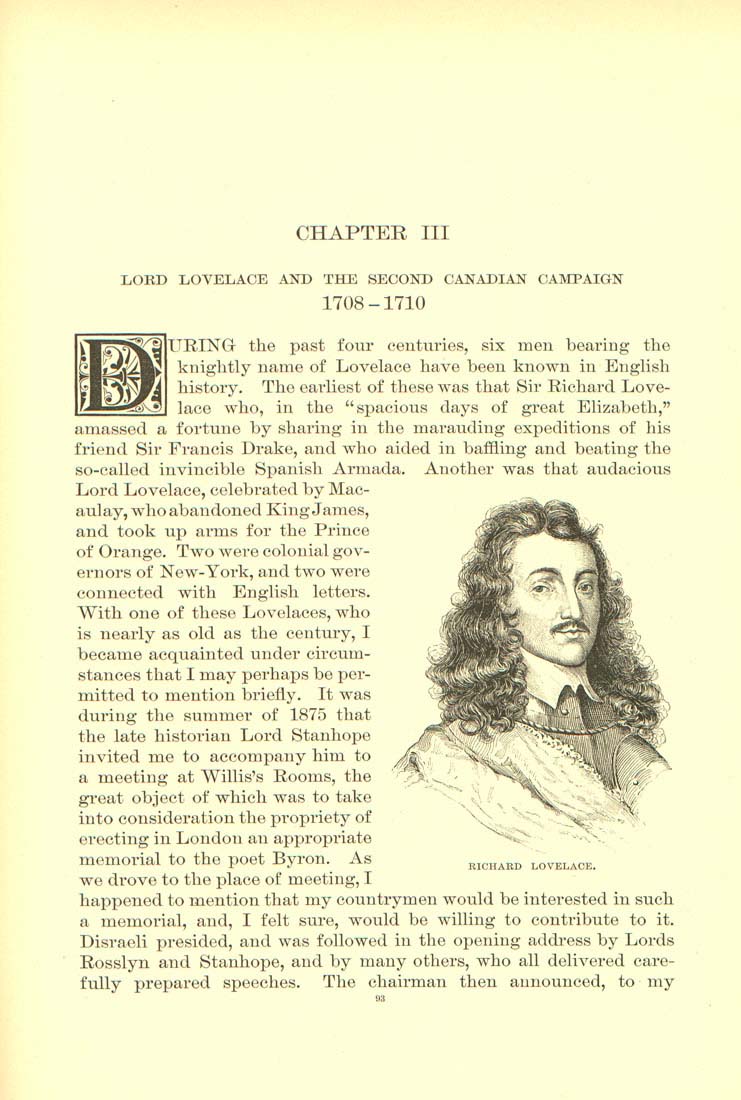CHAPTER III
LORD LOVELACE AND THE SECOND CANADIAN CAMPAIGN
1708-1710
UEINGr the past four centuries, six men bearing the
knightly name of Lovelace have been known in English
history. The earliest of these was that Sir Richard Love¬
lace who, in the ^'spacious days of great Elizabeth,"
amassed a fortune by sharing in the marauding expeditions of his
friend Sir Francis Drake, and who aided in baffling and beating the
so-called invincible Spanish Armada. Another was that audacious
Lord Lovelace, celebrated by Mac¬
aulay, who abandoned King James,
and took up arms for the Prince
of Orange. Two were colonial gov¬
ernors of New-York, and two were
connected with English letters.
With one of these Lovelaces, who
is nearly as old as the century, I
became acquainted under circum¬
stances that I may perhaps be per¬
mitted to mention briefly. It was
during the summer of 1875 that
the late historian Lord Stanhope
invited me to accompany him to
a meeting at Willis's Rooms, the
great object of which w^as to take
into consideration the propriety of
erecting in London an appropriate
memorial to the poet Byron. As
we drove to the place of meeting, I
happened to mention that my countrymen would be interested in such
a memorial, and, I felt sure, would be willing to contribute to it.
Disraeli presided, and was followed in the opening address by Lords
Rosslyn and Stanhope, and by many others, who all delivered care¬
fully prepared speeches. The chairman then announced, to my
RICHARD LOVELACE.
|








